Tatar national costume
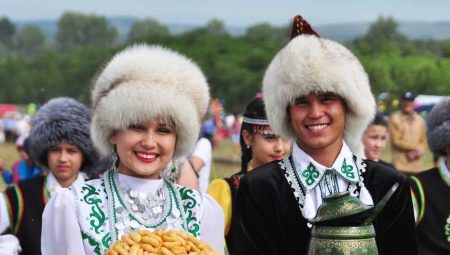
The traditional costume was, is and will remain one of the most striking indicators of a person's belonging to a particular nation.
Despite the fact that fashion does not stand still, and it is often almost impossible to distinguish a European from an Asian by dress, the national costume remains the pride and heritage of every nation, and the traditions associated with its manufacture are passed on from the older generation to the younger.
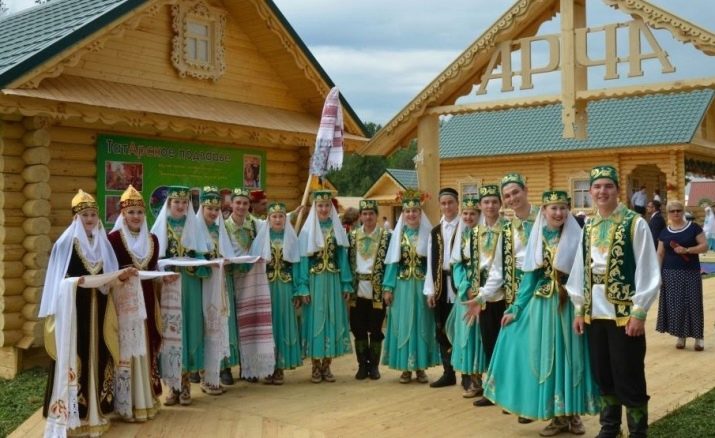
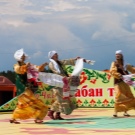
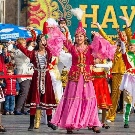
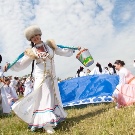
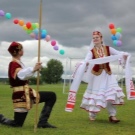
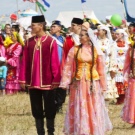
History
Tatar costume is a very general concept that unites the national clothes of different subgroups of Tatars, including the Crimean ones. The Volga Tatars, as well as oriental traditions and religion, paid great attention to the appearance of the costume.
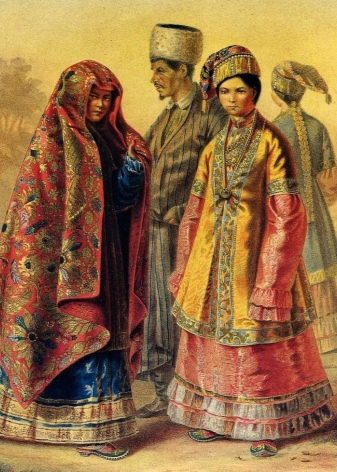
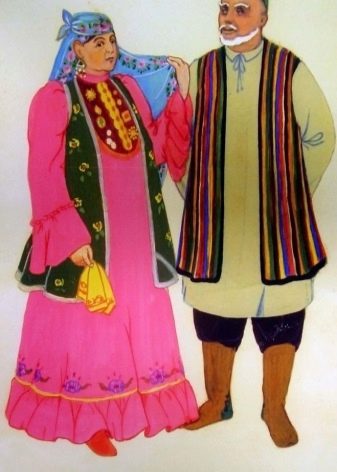
The appearance of the costume was greatly influenced by the nomadic lifestyle of the Tatars. Clothing was thought out in such a way that it was comfortable to ride in it, it was not cold in winter and not hot in summer. She had to be light and pretty enough. Fur, genuine leather, camel or mutton felt and cloth were used for sewing.
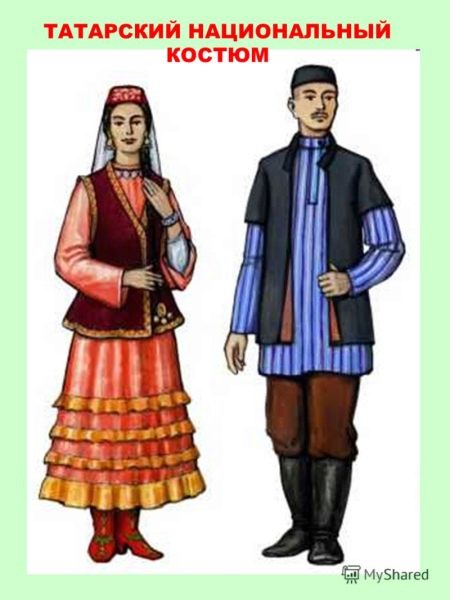
Today, the national costume is rarely seen on the streets of Tatarstan. Most often it can be seen as a dance or stage outfit.

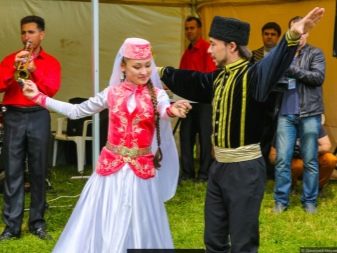
Peculiarities
The Tatar national costume, in addition to the fact that it consists of a shirt, a swinging robe and trousers, has one more feature: it is sewn in a rather limited color range. Basically, they are cherry, blue, white, yellow and green.
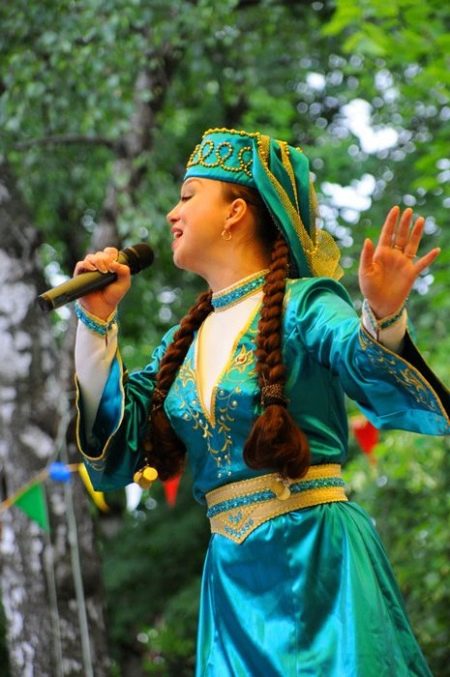
The abundant use of decor is characteristic of the attire, headdress and footwear. Usually, this is embroidery with gold threads, beads, coins. The traditional ornament for embroidery is floral.
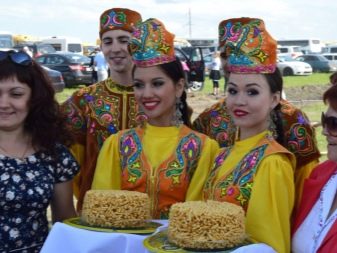
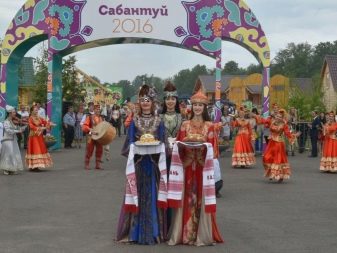
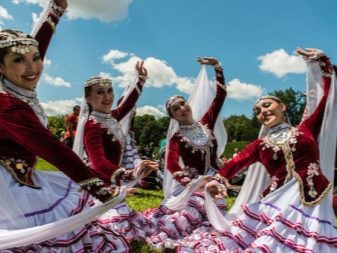
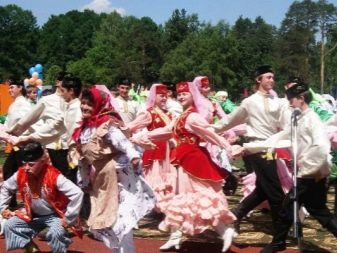
Varieties
Male and female national costume outwardly differ little from each other.The main element of the suit is a wide tunic shirt with side gussets and a deep cut on the chest. In Kazan Tatars, the neckline was replaced by a stand-up collar. The shirt was long enough, wide and worn without a belt. The women's tunic used to be even longer - about to the ankles.
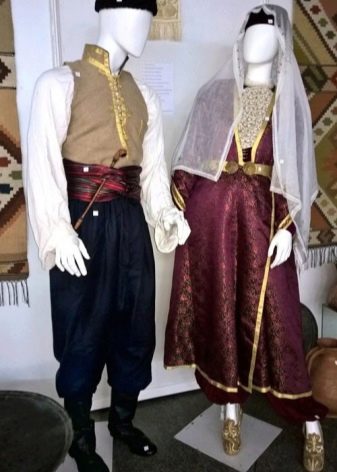

The shirt could be woolen, cotton, silk, or even brocade. Colored ribbons, gilded braid, thin lace, beads, etc. were used to decorate it. A bust (kukrekche or tesheldrek), covering the cutout on the chest, was necessarily worn under a woman's shirt. Harem pants were sewn from coarse linen fabric: for women from a single color material, for men - from a striped one.

Outerwear worn on a shirt was always swinging. It has a slightly fitted silhouette, side wedges and is wrapped on the right side. An obligatory element for outerwear was a knitted or textile belt.
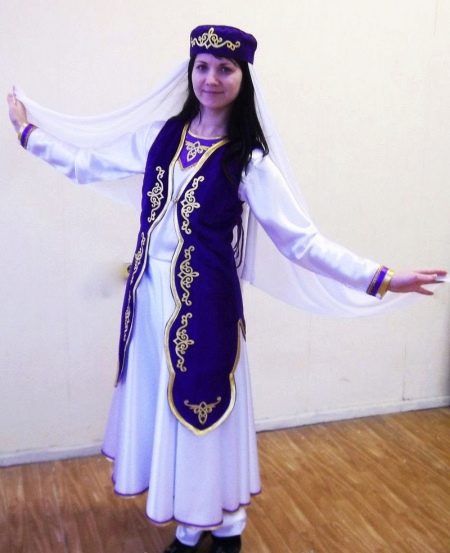
The women's costume differed from the men's only in length and decor - it was decorated with fur, embroidery, appliqués, etc. Over the shirt, women wore camisoles (dressing gowns, swing blouses) up to the knee or mid-thigh. The camisole could have sleeves or be without them. The hem, sleeves and armholes were decorated with braid, feathers, coins, etc.
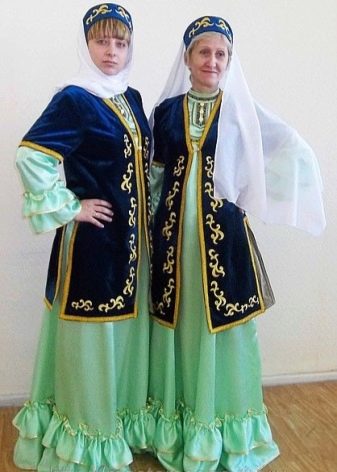
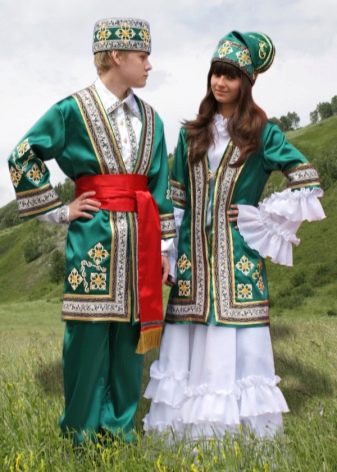
The hem and sleeves of the tunic were decorated with large flounces. A large number of jewelry was necessarily used: earrings, rings, rings, monisto, pendants, etc. A sleeveless jacket, worn over a shirt, was sewn of velvet and decorated with fur or golden braid.
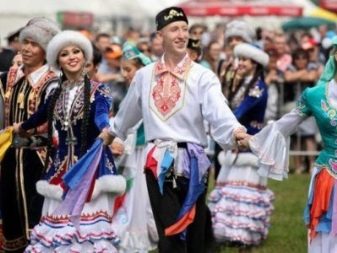

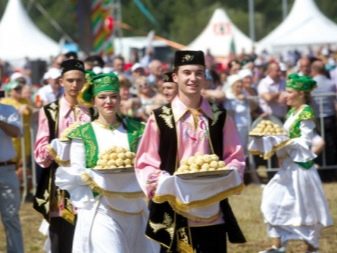
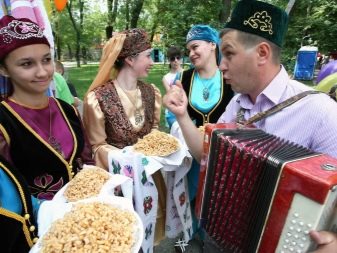
The male headdress consisted of two parts: a lower and an upper one. A skullcap, on which a felt hat (kalpak), a fur hat or a turban, was worn on top of the underwear or at home. Kalpak is a cone-shaped hat, sometimes with curved brim. Such a hat was worn by aristocrats, decorating it with velvet or satin on the outside, and the inside was lined with white soft felt. Bright, multi-colored skullcaps were intended for young people, middle-aged and elderly Tatars wore monophonic models.
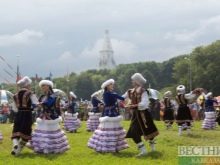

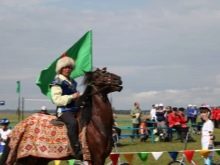
The woman's headdress indicated her marital status. Young girls wore the same type of textile or fur hat "taqiyu" or "burek", which was decorated with embroidery and decor made of beads, silver, corals. The head of married women was adorned with a completely different headdress, which consisted of three parts. The lower part was intended for securing the hair (women wore 2 braids), then there was a veil and, finally, a bandage, hoop, scarf or cap, fixing the veil.


The Tatars used boots (chitek or ichigi) as national footwear. Everyday models were black, festive shoes were decorated with mosaic patterns. A kind of Russian bast shoes (chabat) were used as work shoes.

The national costume has never been complete without adornments. There were a lot of them, and both men and women wore them. These were large gold rings, signets, rings, belt buckles, women's bracelets, earrings, pendants, rings, etc.
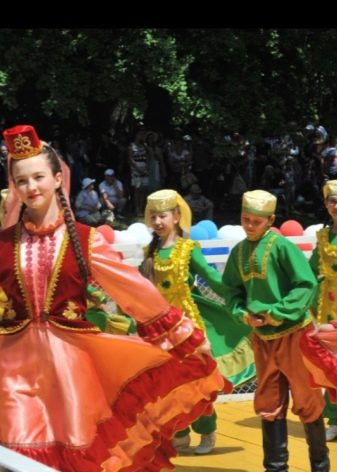

Children's clothes were practically the same and were not divided into clothes for girls and boys. The only difference was the color scheme. The costume for girls was sewn in bright, multi-colored colors: red, green, blue. The boy's suit was made in more subdued shades of blue or black. With the growth of the child, the national costume also gradually changed: jewelry was added, hats and shoes were changed.

Festive
Outfits for celebrations or special occasions differ from everyday ones, first of all, in the material from which they are sewn and in the abundance of decor and ornaments.
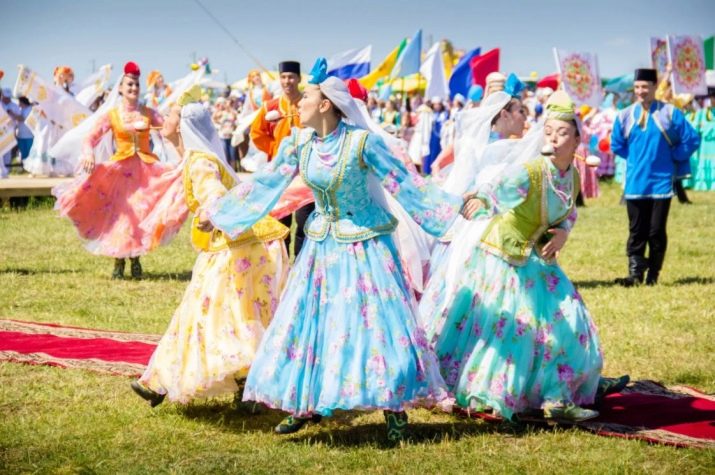
The color of the wedding dress can be white, as well as deep green, burgundy or blue, according to Tatar traditions. Another option is also possible: a snow-white dress + boots and a camisole, made in one of the listed colors.The head must be covered with a wedding veil or embroidered kalfak.


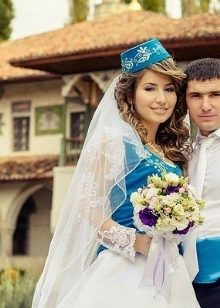
A men's wedding suit is usually made in dark blue and embroidered with national ornaments using gold threads. A headdress is required.

Modern wedding dresses, although they are often sewn in a non-European manner, necessarily retain their national flavor and loyalty to ancient traditions. This is manifested in the classic cut, length, the presence of jewelry, traditional ornaments, etc.
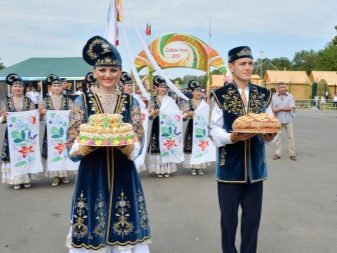
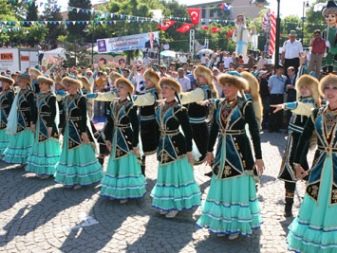
The Tatar dance costume has also undergone certain changes. It can be shorter than the classic one, made of other materials, but the national style is nevertheless preserved. A fur vest, a traditional hat with a tassel or blanket, traditional ornaments - all this makes a dance costume very recognizable.
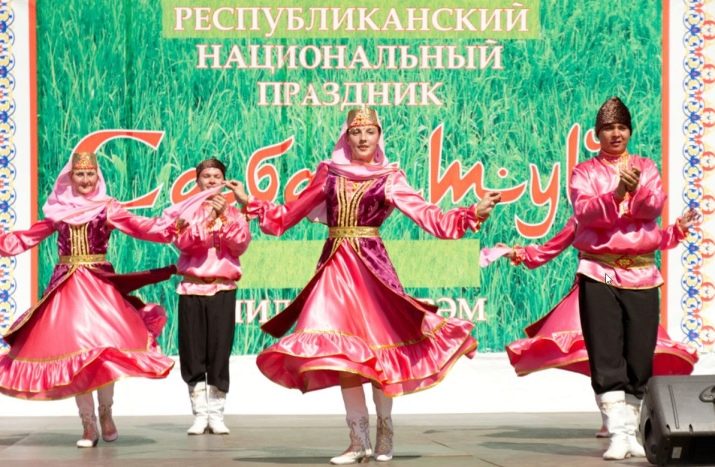
Contemporary style
Time does not stand still, and the old national costume has changed to some extent. Stylized under the Tatar costume may have a different design or length, but the details recognizable for the traditional dress should be preserved in it.

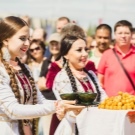

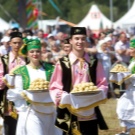
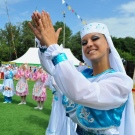
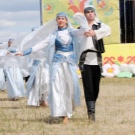
For example, the ornament is usually floral. Mandatory hat - kalfak. It can have a slightly different shape, be sewn to match the dress itself, or be monochromatic. A large number of jewelry is required - both on the suit and on the girl.
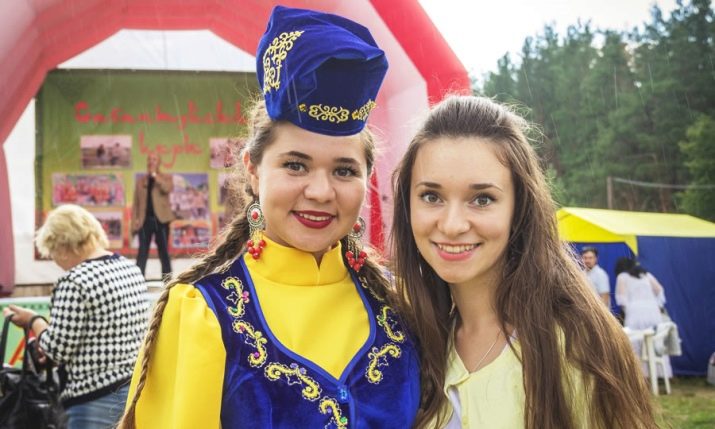
The elements
The costume itself, regardless of whether it is old or modern, necessarily consists of several elements: a shirt (kulmek), wide trousers (yshtyn) and outerwear.
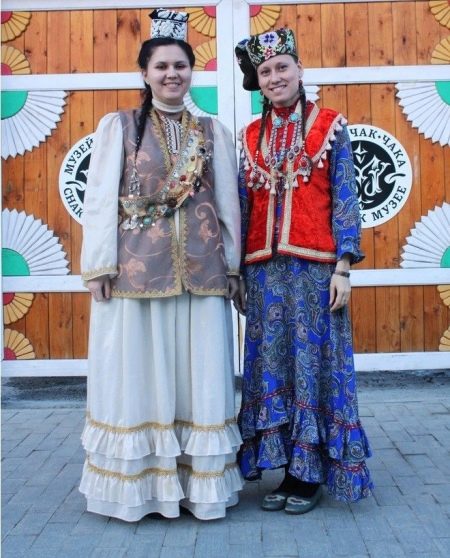
Depending on the class or material situation of a person, the costume differed in the amount and variety of decor, embroidery, material used and the price for it. The costume was decorated with embroidery, colored beads, beads, satin ribbons and fur.
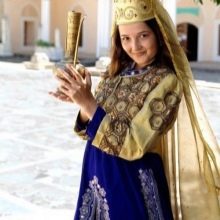
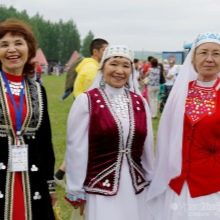

The headdress is considered an obligatory element of the Tatar costume. Men and women have their own. In addition, young girls and married ladies also wear different types of clothing.
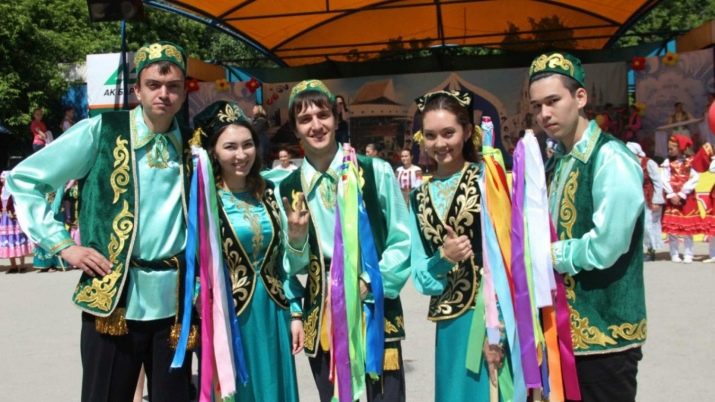
Boots were considered the national footwear of the Tatars. They were worn throughout the year. For the summer, softer leather was used, women's boots were decorated with appliqué and embroidery.


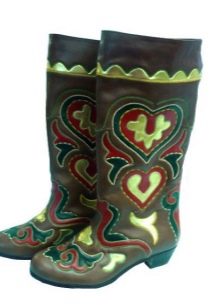
The belt is an important detail of the national costume. Large buckles or embroideries made of gold or silver were used to decorate it.

Textile
Depending on whether the costume was casual or festive, different materials were used for its tailoring.
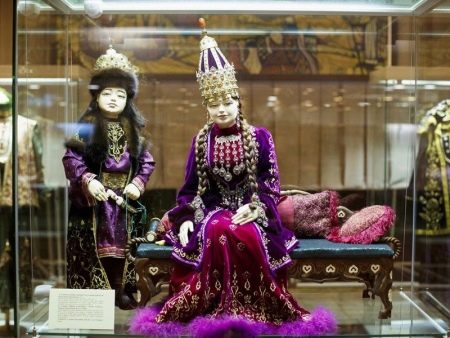
Everyday outfits were made of cotton or homespun cloth. Sheep wool or cotton wool was used as insulation for outerwear. Elegant shirts and camisoles were made of brocade, silk, wool. Decorated with gold braid, lace, expensive embroidery. Sable, arctic fox and fox fur was used for finishing.


Images
The Tatar festive costume is made taking into account modern fashion trends. The style, length, headdress, ornamental decoration remained unchanged.
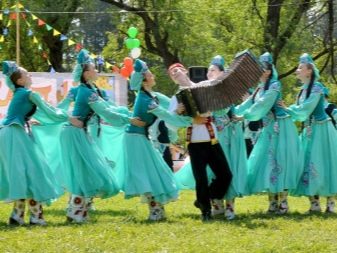
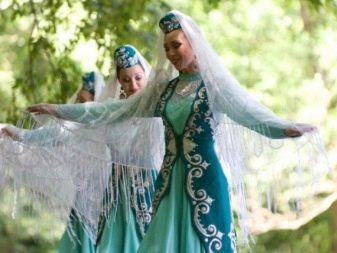
The festive outfit of a Tatar woman cannot be imagined without an abundance of jewelry! Snow-white tunics to the floor are decorated with rich gold trim. Festive brocade or velvet caftans and headdresses are also decorated with gold.









